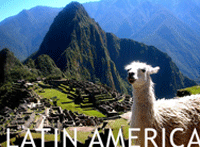USA's Underbelly Evolves into Powerful Organism
Latin American countries will celebrate 200 years since the liberation from the Spanish colonial rule this year. The rebellion, which took place in 1810 in Spain’s colonies, finally gave freedom to the nations. Spain used to control a vast territory of the planet – thousands of kilometers from Texas to Tierra del Fuego.

Britain’s colonies in North America became free during the same years too, which subsequently led to the appearance of the United States of America. Everything was different in South America, where former Spanish colonies gradually split into tens of smaller countries.
The countries of Latin America were referred to as “banana republics” for many years. All of them were considered to be just additions to the developed West, the USA first and foremost.
Vadim Teperman, deputy director of Russia’s Institute for Latin America, shared his thoughts with Pravda.Ru about the history of South America.
“There were two different colonial models in the two Americas. England, one of the world’s most developed countries at that time, was ruling North America, whereas Spain was an underdeveloped feudal state by the end of the 18th century. Industry was developing very fast in North American colonies, but in South America everything was stagnant. One may say that nothing was developing there at all after the Spaniards had conquered those territories.
Spain was hunting for precious metals, but agricultural territories were developing very slowly, even regressively, with the use of slavery. The mindset is also very important here. North Americans were making money by the sweat of their brow to invest it in something, to start business. In South America, people were mostly spending all they had. The situation began to change since the 1930s, with the development of capitalist relations in Latin America.
“The underdeveloped economy of South America made the continent dependent on the West, presumably the USA. Nowadays, there is no dominating power in the region. The USA’s influence weakened considerably, but the national Indian culture was preserved. In North America, that culture was destroyed completely. But if you go to Bolivia, you will find Indians there living pre-Columbus lifestyle.
“Many countries in the region eventually evolved into influential states. The living standard in those countries puts them far behind the Western states, but positive changes are obvious. The breakthrough has been achieved during the recent 30 years. Chile and especially Brazil are prime examples at this point. Brazil is now world’s third largest makers of aviation. There are impoverished countries there, like Haiti, but it’s more like an exception for Latin America today.
“When the USSR collapsed, Moscow left the region without attention for many years. China came there instead. In Cuba, for example, cars, radio and TV sets, fridges – all were made in the USSR. Now most of the goods there are labeled as “Made in China.”
“Russia has returned to Latin America now. It does not go about the cooperation in the energy field only. Venezuela, for example, spends billions of dollars to purchase Russian weapons. Russia now cooperates with Argentina, Brazil, Columbia, Panama and other countries of the region.
“Russia misses a lot in Latin America and loses a lot to foreign competitors. Two years ago, for example, Russia’s Sukhoi design bureau lost a five-billion-dollar tender to France’s Rafale. The jets will be shipped to Brazil, in spite of the fact that Brazilian pilots consider Su-35 a much better aircraft. France was more flexible and found a compromise with Brazilian customers who wished to purchase both the jets and the production technology.
Sergey Balmasov
Pravda.Ru
Subscribe to Pravda.Ru Telegram channel, Facebook, RSS!


